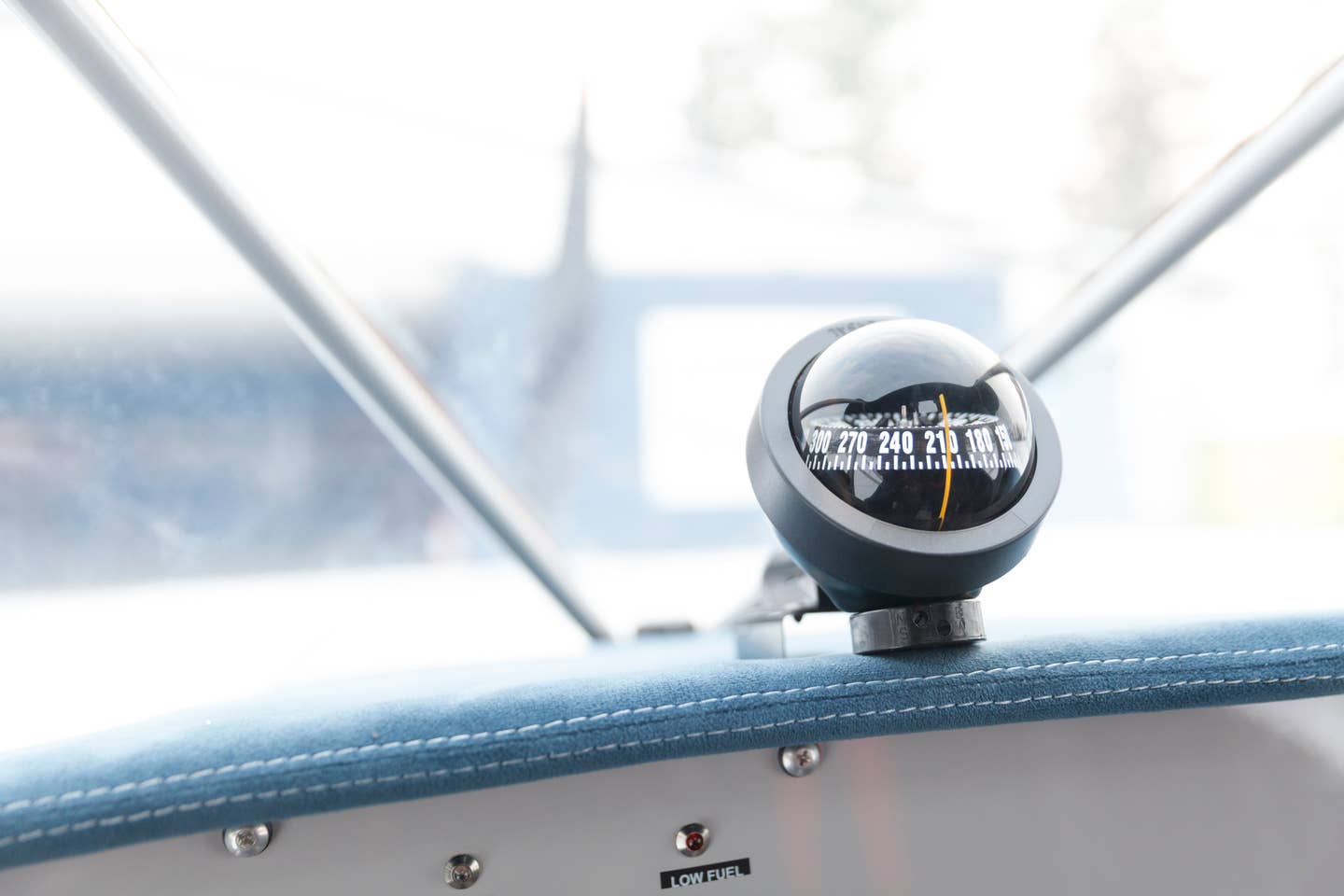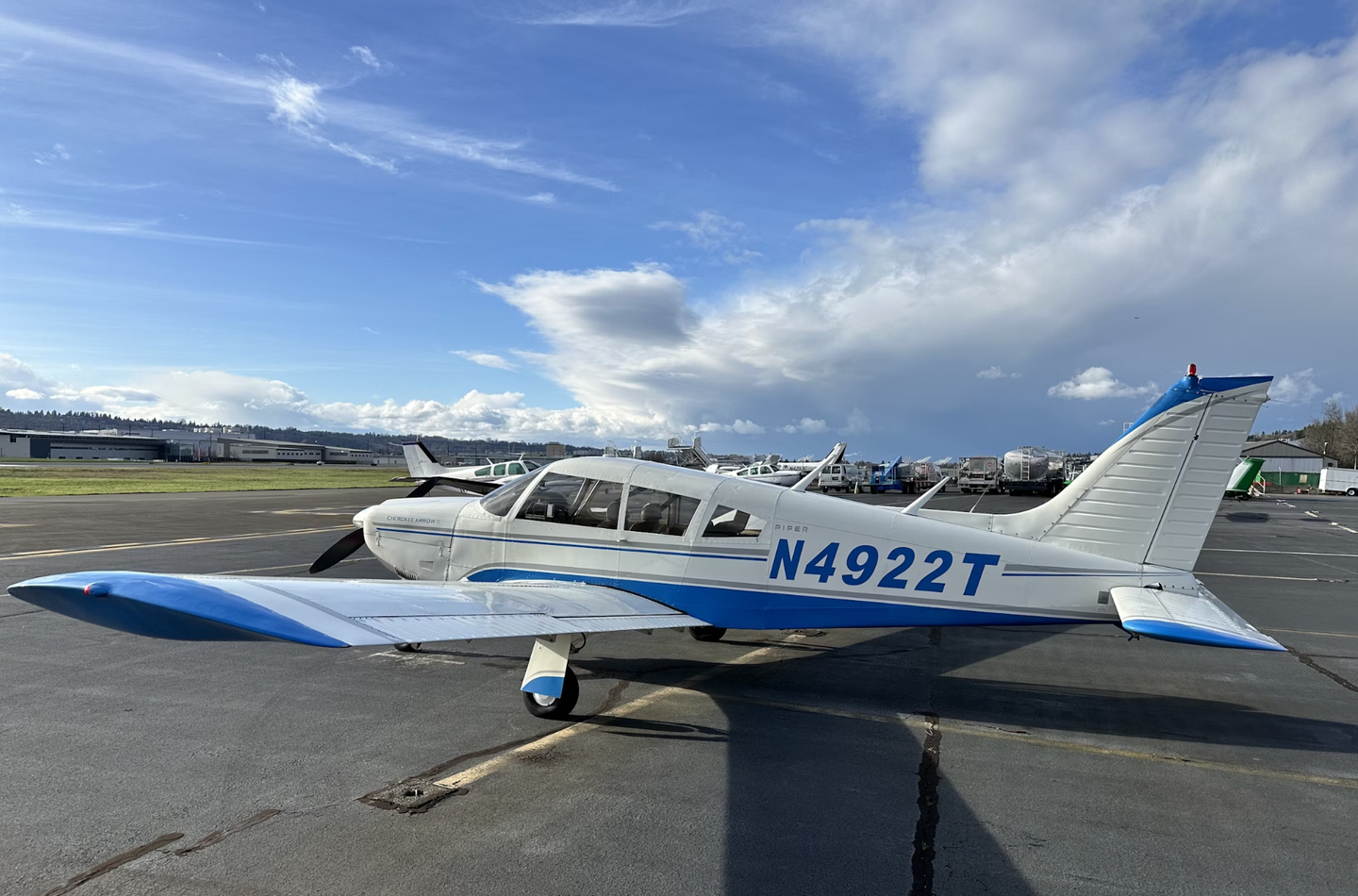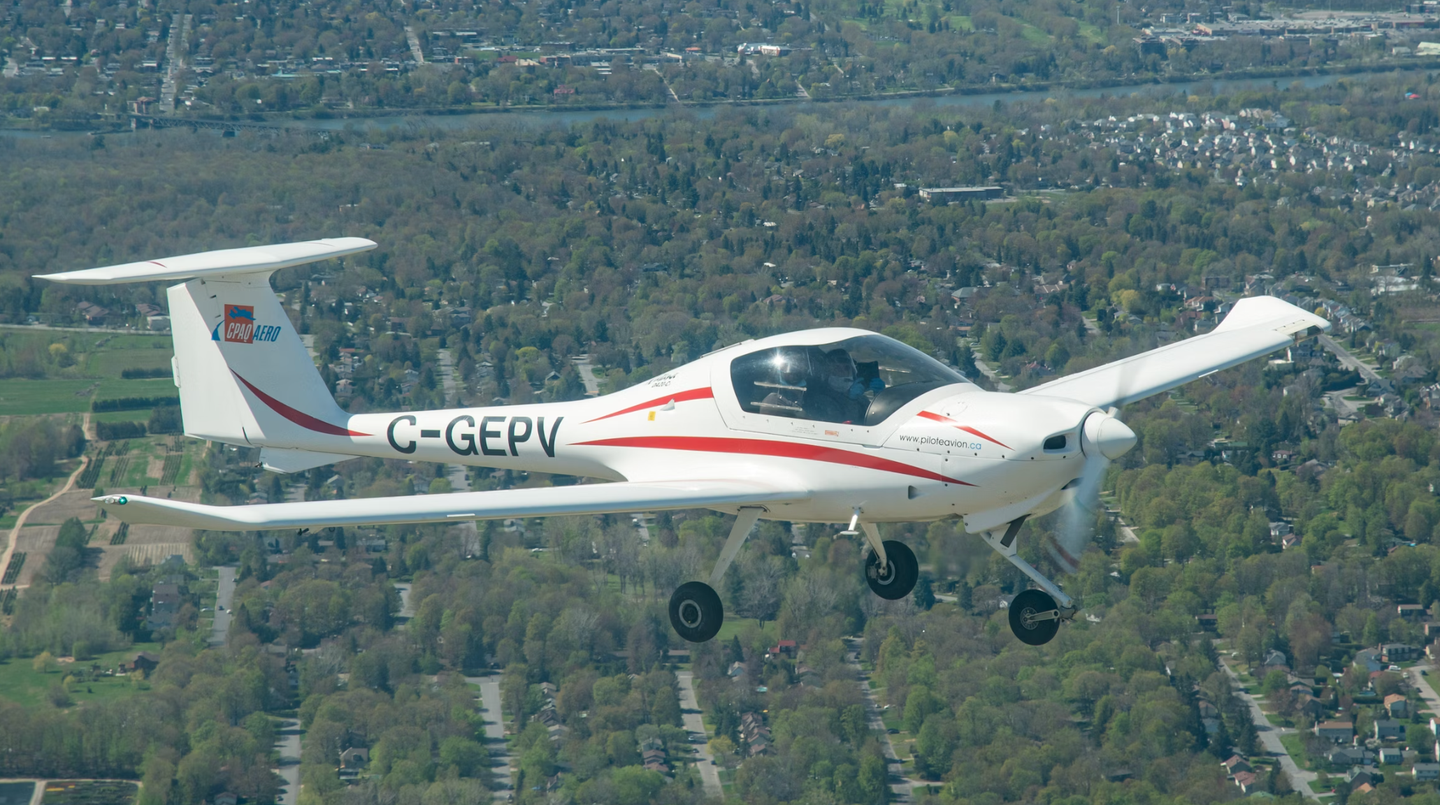Your Magnetic Compass Remains the ‘Old Reliable’
Of all the gadgetry in airplane cockpits, the magnetic compass is probably the least regarded, least used, and least understood. And yet, it deserves understanding and respect, because it is…

Of all gadgetry in the cockpit, the magnetic compass is probably the least regarded, and yet it deserves respect. [image: Adobe Stock]
Of all the gadgetry in airplane cockpits, the magnetic compass is probably the least regarded, least used, and least understood. And yet, it deserves understanding and respect, because it is often the most steadily reliable navigational reference we have.
Often referred to as the “whiskey compass,” “wet compass,” or “standby compass,” the magnetic compass is a required item per FAR 91.205 for flight in nearly every category and class of aircraft. It’s considered to be that important because being able to find your way across the surface of the Earth is crucial to the successful completion of a trip. The magnetic compass is utterly reliable because it has no power source to fail, so long as the Earth’s magnetic field endures. AHRS (attitude/heading reference system) units and spinning iron gyros need electricity or vacuum power, but the magnetic compass just sits there, on its own, wobbling in its case, giving a source of direction after all else fails.
Which is not to say our compass can’t show a false indication, but at least it’s consistently false. One only needs to understand how its error modes work, and it will still provide enough information to guide our path. It is because of these compass errors that more stable devices, such as gyroscopes or electronic instrumentation, were invented. But backing them up is the job of the magnetic compass.
No, It’s Not Whiskey
The simplicity of the compass is its virtue. That pivoting, circular “card” with numbers on it always seeks to remain fixed in space while the aircraft moves around it, aligning itself with the Earth’s lines of magnetic force that terminate at approximately the north and south poles. To dampen the jiggles experienced by everyone who has attempted to use a hand-held compass, a viscous fluid fills the chamber housing the precisely gimbaled card, usually colorless kerosene or aliphatic naphtha.
The term “whiskey compass” can be traced to the time of wooden sailing ships when alcohol was used as compass liquid because it did not freeze like water does.
Should you smell the odor of jet fuel emanating from the cockpit carpet of a piston-powered airplane, you’ll probably find that the sun-baked gasket sealing the compass has succumbed to old age. Wiping the bottom of the housing will verify your diagnosis. The compass still works but is highly unstable.
It’s not unusual to find a fluid-filled compass with a low volume of kerosene, leaving a horizon-like line of demarcation between air and fluid. It would be foolish to assume that this half-full indication can be used as an attitude reference, since centrifugal force keeps it in a level state while turning. Rather, low fluid leaves the compass card liable to tremble and spin without proper damping.
The newer vertical-card compass eliminates the liquid-filled chamber, using eddy current damping to reduce oscillations and lead-lag error. It also offers intuitive turn orientation, with a presentation similar to the steam-gauge directional gyroscope, or its electronic representation.
- READ MORE: Best Pilot Kneeboard Options in 2024
Card? What Card?
No compass installation is perfect—pristine, unadorned compass correction cards notwithstanding. Along with the compass itself, there’s a certification requirement for a posted placard of corrections to be applied to its readings at 30-degree intervals. The airframe, radios, and other instruments can acquire or emit magnetic disturbance, throwing the compass’ indications off by a few degrees. An aircraft compass has correcting magnets within the case that can adjust some of these specific errors, but not all, hence the correction card that says “for [fill in blank], steer [fill in blank].” If yours is missing or not filled out, your aircraft is not legal for flight.
In your first hour of training, you were probably told to largely disregard that compass mounted on top of the panel or up in the windshield, which was placed there to remove it from interference emanating from below. You were done a great disservice. If you are flying an older aircraft with a directional gyro (DG) at the bottom of the “standard T” panel arrangement, you’ll need to reset the gyro periodically by—ta-da—the faithful old magnetic compass. A DG has no brain of its own. It merely seeks, for a while, to stay oriented with a spot it was told means north. Eventually, it will need updating.
GPS directional references are also artificial, in that they are calculated from weak, easily disrupted signals processed by a computer that needs stable power. To hug the magenta line presented by our navigator, we must fly a compass heading, so that the GPS-derived track number equals the flight plan’s course. The glass cockpit’s AHRS or ADHRS platform contains the magnetic reference needed for EFIS displays, but it’s still based on compass technology, albeit much more stable.
Why Does It Deviate?
The compass, as you learned early in ground school (and promptly forgot), is subject to a host of errors, including the aforementioned deviation in each aircraft. And because the forever-roaming magnetic poles are not located exactly where the geographic north and south poles are shown, there will be isogonic and agonic lines of variation displayed on your navigation chart with a number showing how far off the compass is pointing from true north/south. Shown with an accompanying “E” or “W” to signify east or west variation, this denotation has nothing to do with the direction in which you’re flying. Rather, it shows the degrees the compass is pointing east or west of the true pole.
To fly in the true direction, subtract an easterly variation amount from the measured true course, or add a westerly variation, which will provide the magnetic course you’ll need to steer. A final adjustment will need to be made for the deviation shown on the compass correction card.
As a rudimentary check on the health of your compass, take a look at it when lined up for takeoff. It should read within 5 degrees of the runway direction, shown by the large numbers on the pavement ahead of you (Remember, runway numbers are rounded off to the closest increment of 10 degrees). If you find it to have a larger deviation, make an appointment with your instrument repair shop for a “compass swing” to bring it back into alignment.
If the air is smooth and you’re not maneuvering the aircraft, all will be well. The compass unfailingly sits there, presenting a truncated number every 30 degrees with lines showing 5-degree increments between. Most rudimentary magnetic compasses, however, use a horizontal compass card, around which the aircraft moves, as opposed to the vertical-card presentation of a steam-gauge or electronic directional gyro. Such vertical cards show a desired course to the left or right of the present heading in the direction one naturally would turn to get there.
The old magnetic compass (unless you’ve retrofitted with a vertical-card compass) works backward. You’ll see the numbers leading in the opposite direction of the way you want to turn to get there. When using a horizontal compass card, even one in an old World War II-style directional gyro, you must remind yourself to “go left to decrease, right to increase.”
- READ MORE: Flying Precise When it Isn't Nice
What else can go wrong? You’ll need to ignore the compass’ acceleration/deceleration errors when on an easterly or westerly heading. A sudden slowdown will pull the compass card toward the south, while speeding up will send it slightly off to the north. Just wait until your speed stabilizes and the compass will settle down.
When turning toward a northerly or southerly heading, the magnetic compass tends to lead or lag the aircraft’s motion. Most pilots learn this as Undershoot North and Overshoot South or UNOS. As you approach true north, the compass movement slows down, showing an error while turning about the same amount as latitude. At 30 degrees north, expect a lag of 30 compass degrees. Roll out wings level, and the compass catches up just fine. If turning toward a south heading, the compass will run ahead of the aircraft by about the same amount. All of these errors reverse themselves in the Southern Hemisphere.
Needle, Ball, Airspeed
…and Compass
Partial panel flying, a form of torture imposed on check ride applicants by instrument instructors, frequently removes the attitude and directional cues provided by gyro-stabilized instruments. That leaves us with only what was once termed a “basic panel,” consisting of a turn reference (turn needle or turn coordinator), slip/skid ball, and the pitot/static instruments. The rudimentary emergency instrument flying taught for the private certificate 60 years ago used this system.
The order of priorities when flying with the basic panel was, and still is, “center the needle,” which means stop any turn by using ailerons to keep the turn indicator neutral, “center the ball” by applying rudder to put the slip/skid ball in the center, thereby avoiding inadvertent turn entry, and “adjust the airspeed” by raising or lowering the nose to reverse any trend away from level-cruise (or climb/descent) airspeed. At this point, it is safe to glance at the magnetic compass, which will indicate correctly in the absence of turn or acceleration errors.
- READ MORE: 9 Best Pilot Books for Student Aviators
None of the compass’ vagaries make it an unusable instrument. You simply need to understand when and how to expect erroneous readings, and either wait for a stable indication or correct out the error. In payment for this effort, the magnetic compass will be a faithful companion, unfailing in service and dependable at all times. More than that you can’t ask.
Editor's note: This story originally appeared in the Jan/Feb 2024 issue of Plane & Pilot magazine.

Subscribe to Our Newsletter
Get the latest Plane & Pilot Magazine stories delivered directly to your inbox






